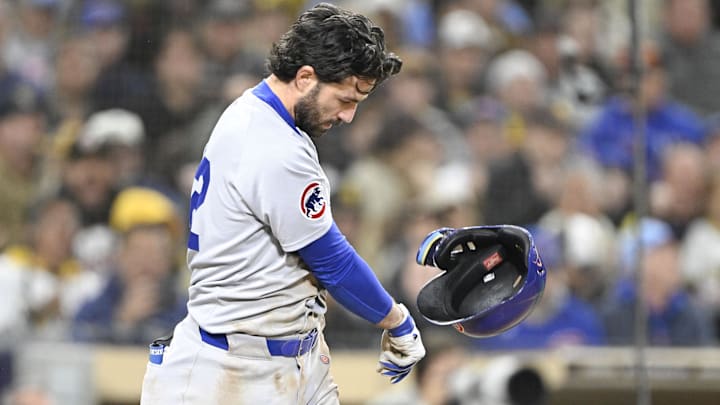Three weeks into the 2025 season, one trend is becoming plainly obvious: offenses sucks. Even worse than usual.
The decline in run production has been a consistent thread through the game’s last decade or so. That’s why, a few years ago, Major League Baseball changed rules to eliminate shifts and encourage base-stealing.
But, the early markers for 2025 suggest that hitting is even more of a lost art than it was before those changes were put in place. The MLB batting average of .236 is on pace to be the lowest — are you sitting down? — in history. And that's a history that dates back the first professional league in 1871.
Why is offense down in Major League Baseball in 2025?
OPS — the combination of on-base average plus slugging average — is today viewed as the gold standard for offensive skill. The current .698 OPS is the lowest since 1989, and the 39th lowest in the 155 years that organized professional baseball has been played.
Most of the leaner seasons occurred in the period historians lovingly refer to as the Dead Ball Era.
Eighteen of the 30 teams are averaging fewer runs per game than last season, the average run production being down by a tenth of a run. But that average is skewed by five teams that are defying this trend. The Cubs, Cardinals, Rays, Yankees and Giants are all averaging a run or more per game than in 2024. Strike those five teams from the data set and the remaining 25 teams are averaging a third of a run less per game this season than last year.
Some of the individual team performances are strikingly poor. The Colorado Rockies play in the legendarily hitter-friendly environment of Coors Field. Yet, the Rockies are on pace to average just 2.89 runs per game, down more than a full run last season’s 4.21.
The Kansas City Royals were viewed as a front-rank threat in the AL Central. But they have started 8-13 largely because run production is down from 4.53 last year to just 2.95 so far this year.
The table below illustrates the steady diminishment of run production. It looks at runs per game, batting average and OPS for each season since 2016.
Season | RPG | BA | OPS |
|---|---|---|---|
2025 | 4.28 | .236 | .698 |
2024 | 4.39 | .243 | .711 |
2023 | 4.62 | .248 | .734 |
2022 | 4.28 | .243 | .706 |
2021 | 4.53 | .244 | .728 |
2020 | 4.65 | .245 | .740 |
2019 | 4.83 | .252 | .758 |
2018 | 4.45 | .248 | .728 |
2017 | 4.65 | .256 | .750 |
2016 | 4.48 | .255 | .739 |
It’s hard to quantify precisely why the decline is taking place. Some might argue that weather is playing a big part; late March and early April obviously is the coldest part of the season, and cold is seen as an offense repellent. If that line of logic is right, the numbers may normalize by September.
But a look at last season’s data suggests this decline in offense isn’t some freaky three-week exception. Run production has fallen by more than four percent over the past decade, average is off eight percent and OPS is down six percent.
We may extract some clues as to why this decline is so widespread by looking at the five teams that are defying the trend. What are they able to do that most teams are not doing?
And when you dig into the data, one pretty esoteric piece of data stands out. SABRmetricians call it the Power/Speed number.
Bill James developed Power/Speed years ago out of a sense that the combination of home runs and stolen bases might give a good indicator of productivity. The formula, meaningful only to mathematicians, amounts to twice the sum of team homers multiplied by team steals and then divided by home runs plus steals.
Don’t bother memorizing the formula; this isn’t a test. Instead, consider how the five defiantly productive teams rank in Power/Speed Number.
1) Cubs
4) Rays
6) Yankees
9) Giants
13) Cardinals
So two of the five trend-defying teams rank top five in Power/Speed, four rank top 10 and all five rank in the upper half of the league.
Conclusion: It’s still good to hit home runs, but it’s really, really good to hit homers AND steal bases.
The Cubs, off to a 13-9 start, are poster children in this regard. They rank third in home runs (with 32) but they also rank second in steals (with 29). The three teams that rank ahead of them in homers -- the Yankees, Dodgers and Angels – rank 13th, 20th and 24th respectively in steals.
Meanwhile the three teams that rank closest to the Cubs in steals — the Mariners, Red Sox and Pirates — rank sixth, 20th and 28th respectively in homers. Not coincidentally, run production is off three-quarters of a run in Pittsburgh, one-third of a run in Seattle and 17 percent in Boston. You have to be able to do both.
And today, most teams can’t… as the offense numbers demonstrate.
